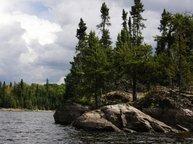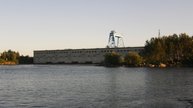Research
Research > Components >
Component 2.1 : Mesoscale Modeling of the Productive Capacity of Fish Habitats in Lakes and Reservoirs


Objectives :
The objectives of the component Mesoscale modeling of the productive capacity of fish habitats in lakes and reservoirs are :
- to contribute to the development of approaches to map physical conditions with a precision and a frequency sufficient to study the interactions between metrics of PCFH and physical conditions at the scale of habitat patches in complete aquatic ecosystems.
- to develop and compare HQM describing the relationship that may exist between different metrics of PCFH and environmental conditions at the scale of habitat patches for combinations of species and life-stages in different lakes and reservoirs.
- to identify the sampling strategy that permits the estimation and the modeling of metrics of PCFH that correlate best with fish production.
Students Projects:
| Project Title | Supervisor (s) | University | Student | Collaborators |
|---|---|---|---|---|
| Applying fish length-frequency spectra as an indicator of habitat use and ecosystem status in an area impacted by hydropower | G. Rose | Memorial University of Newfoundland | Laura Wheeland (M. Sc.) | Université de Montréal (Daniel Boisclair); Memorial University of Newfoundland (Rodolphe Devillers) |
| Aquatic community structure-productivity based on acoustic size and frequency | G. Rose | Memorial University of Newfoundland | Riley Pollom (M. Sc.) |
|
| Comparative analysis of sampling methods to develop habitat use models to estimate and predict fish production in the littoral zone of reservoirs | D. Boisclair & P. Legendre |
Université de Montréal | Nathan Satre (M. Sc.) |
Guillaume Bourque (Université de Montréal) |
